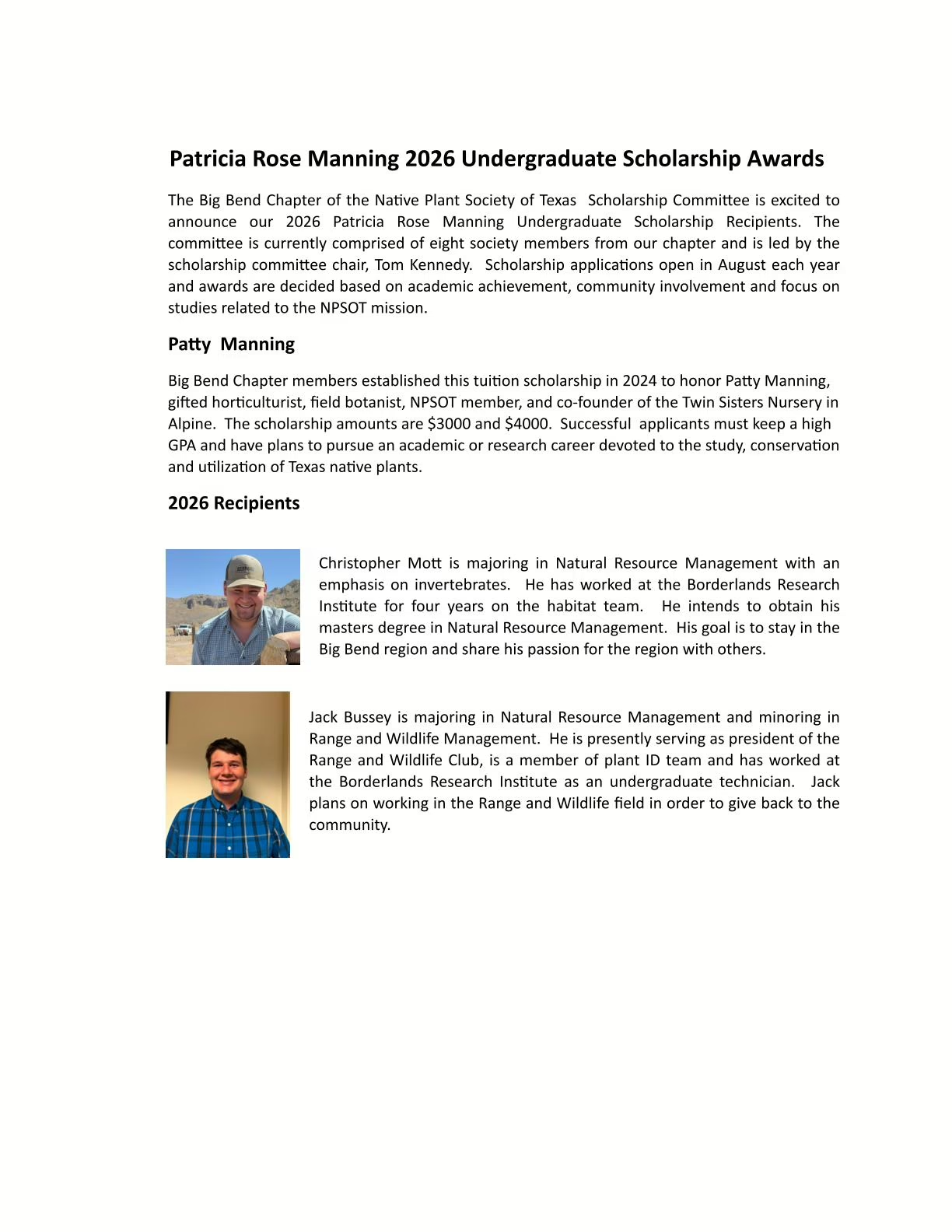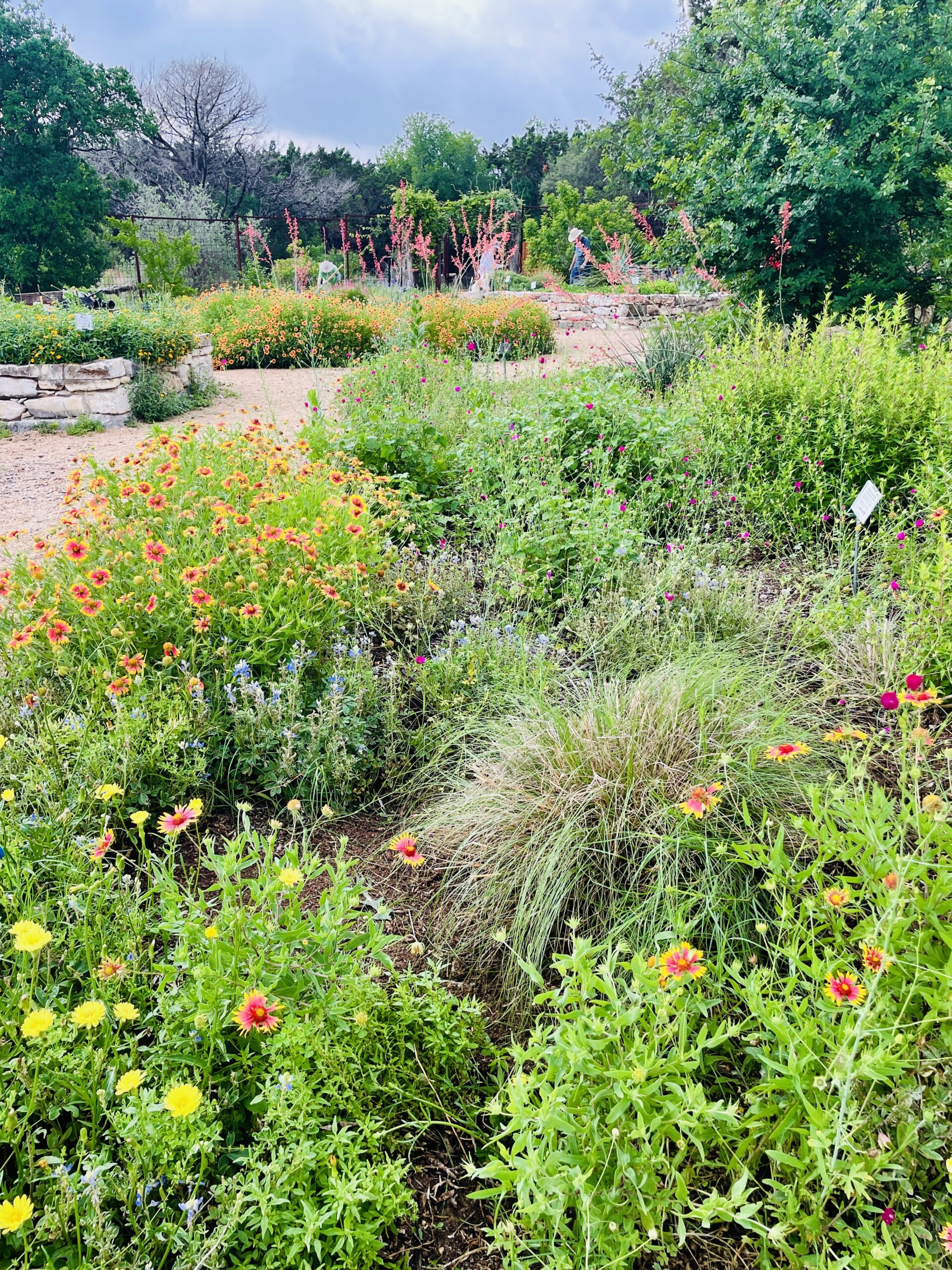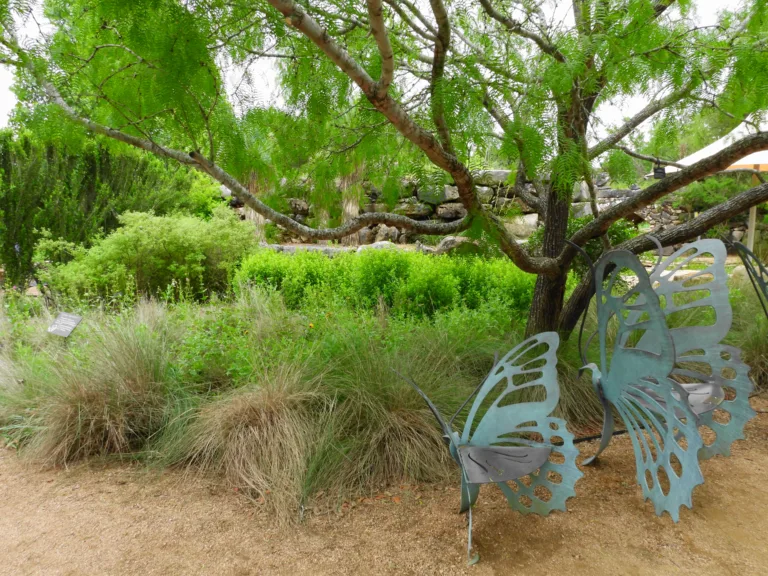
Protecting the Texas environment through conservation, research and utilization of native plants
Native Plant Database
Search for plants that fit your landscape by soil type, sun/shade, height, and more
Native Plants ...
Are drought-tolerant, naturally conserving our precious water resources
Provide habitat and food for birds, butterflies, bees and other wildlife
Don’t need special pampering or fertilizing
Are natural to their ecosystem
Help us maintain biological biodiversity


Shop Native Plants Near You!
The Native Plant Society of Texas partners with local nurseries and growers. Learn more about our NICE Program and start shopping.
Latest Chapter News
Local chapters across the state help promote the Native Plant Society of Texas mission while providing a social context which many members enjoy. Each chapter chooses projects according to the interests of their members, and organizes local field trips, meetings, plant sales and other events. Most chapters publish their own websites and newsletters.

14 on the 14th: Designing a Native Garden for Winter Interest
A four-season landscape provides more than just year-round appeal. The berries, seeds, and evergreen shelter offered by native plants are a critical lifeline for local birds and other wildlife when resources are scarce.

2025 Patty Manning Undergraduate Scholarship Award Recipients
It is my great pleasure to announce the recipients of
Where to see native plants
Chapter members support native plant gardens in many cities and parks in Texas.
Classes and Native Landscape Certification

Class Descriptions
Level 1 is a prerequisite for Level 2 and for Level 3. Subsequent levels may be taken in any order. NLCP is a state-wide program, but classes focus on the

Native Landscape Certification Program
Fall 2025 Schedule Registration for Spring classes will open February 1st at 8am. The schedule will be posted in the last week of January. There will not be a registration
Gardening for Monarchs
Monarch & Milkweed Resources
Learn about Monarchs Learn about the Monarch Butterfly Learn about Milkweed Texas Parks and Wildlife Identification of Milkweeds (Illustrated Guide) Learn about Butterfly Gardens Wildflower Center guide to making
Monarch Waystation Requirements
Monarch Waystations are places that provide all the resources necessary for monarchs to produce successive generations and sustain their migration. A Monarch Waystation needs milkweeds, nectar plants, and some kind of
Garden Grants
Monarch Garden Grants The Native Plant Society of Texas awards small grants to nature centers, schools, educational groups and others to help fund development of Monarch demonstration gardens or Monarch Waystations
Texas Native Plants Member Magazine

Fall 2025 Member Magazine

Summer 2025 Member Magazine

Spring 2025 Member Magazine

Virtual Event Registration for the 2025 Fall Symposium is open through 10/03/2025!
The NPSOT Fall Symposium is coming to Salado, Texas on October 3, 4, and 5th, 2025!
Register now for the virtual event!
H-E-B Texas Native Plant Celebration
This October, we are once again excited to be partnering with H-E-B for its Texas Native Plant Celebration. H-E-B offers native plants because of its commitment help conserve and protect Our Texas, Our Future.
More than 200 H-E-B stores will be selling a colorful selection of native plants at a special price.
Native Plant Society of Texas volunteers will also be tabling at 25 select stores over the course of two weekends in October to answer customers’ questions about native plants. The dates and times vary by store, please click the Learn More button for details.






